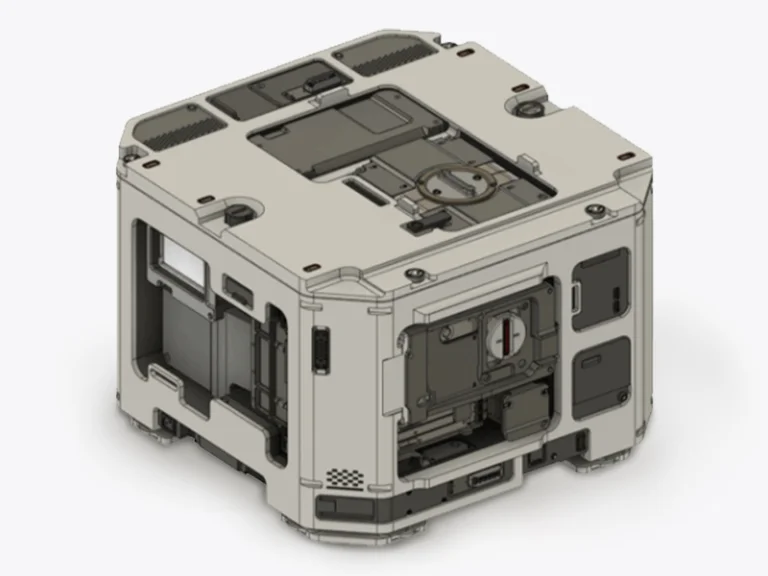Polyurethane injection molding is a powerful and versatile manufacturing process that plays a crucial role in producing durable and high-performance components across various industries. This article explores the intricacies of pu molding, detailing the key characteristics of polyurethane, the step-by-step process, and the advantages it offers in creating complex, precision-engineered parts. From automotive to medical applications, polyurethane injection molding delivers exceptional results, providing manufacturers with an efficient method for producing both flexible and rigid components. Dive into the world of urethane injection molding and discover how this process is shaping the future of custom part manufacturing.
Introduction to Polyurethane Molding Material
Polyurethane is a synthetic polymer formed by the reaction between a polyol and an isocyanate. It is known for its versatility, strength, and durability, polyurethane. This combination results in a material that can be molded into various shapes and densities, making it suitable for a broad range of applications, from automotive components to medical devices.
Polyurethane can be engineered to be flexible or rigid, depending on the desired properties of the final product. Polyurethane is prized for several key characteristics that included durability and strength, temperature and strength, customizabilty.
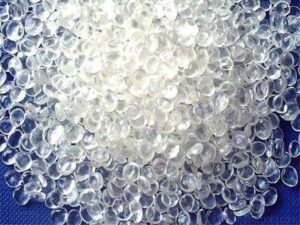
| Property | Description | Typical Range/Units | Explanation |
|---|---|---|---|
| Density | The density of polyurethane depends on hardness, formulation, and type (e.g., TPU, PUR). | 1.10 - 1.25 g/cm³ | Harder PU has higher density, while softer PU has lower density. Lower density materials are lighter. |
| Tensile Strength | Tensile strength determines the material's performance under high load. | 40 - 60 MPa (soft); 60 - 80 MPa (hard) | Softer PU has lower tensile strength, while harder PU is stronger and more suitable for high-strength applications. |
| Elongation at Break | The extent to which PU can stretch before breaking, indicating its flexibility and toughness. | 300% - 800% | Higher elongation means more flexibility, suitable for parts that require high elasticity. |
| Hardness | Hardness affects wear resistance and impact resistance. | 20 - 90 Shore A | Higher hardness results in better wear resistance but lower flexibility, while softer materials are more flexible. |
| Glass Transition Temperature (Tg) | The temperature at which the material transitions from a rigid to a more flexible state. | -40°C to -10°C | Lower Tg materials are more flexible at low temperatures. Harder PU has a higher Tg, improving rigidity at low temperatures. |
| Heat Deflection Temperature (HDT) | The temperature at which the material starts to deform under heat. | 80°C - 150°C | Harder PU can withstand higher temperatures, while softer PU deforms at lower temperatures. |
| Wear Resistance | The material's ability to withstand abrasion, crucial for high-wear environments. | Excellent | PU has high wear resistance, commonly used in tires, shoe soles, and other high-friction applications |
| Oil Resistance | The ability of PU to resist degradation in oil and similar substances. | Moderate | PU has moderate oil resistance, and special formulations can improve this property. |
| UV Resistance | Resistance to degradation from UV light exposure, which can break down the material. | Poor | PU is sensitive to UV light and typically requires UV stabilizers or coatings for outdoor use. |
| Hydrolysis Resistance | The material's resistance to degradation in humid or wet environments. | Good | PU generally has good resistance to hydrolysis but may degrade under prolonged exposure to water. |
| Elastic Modulus | The material's stiffness or resistance to elastic deformation. | 20 - 200 MPa | A lower modulus means greater flexibility, while a higher modulus indicates stiffness, suitable for structural applications. |
| Chemical Resistance | PU's ability to resist degradation from chemicals such as acids, alkalis, and solvents. | Good | PU is resistant to most acids, alkalis, oils, and some solvents, but certain strong chemicals can still degrade it. |
| Impact Resistance | The ability to withstand sudden impacts without breaking. | Good | PU offers excellent impact resistance, making it ideal for applications where energy absorption is critical. |
| Processability | Ease with which PU can be processed using various molding techniques. | Good | PU is versatile and can be processed by injection molding, extrusion, foam forming, and more. |
| Thermal Stability | PU's ability to maintain stability at high temperatures over time. | 100°C - 200°C | PU has good thermal stability; some high-performance grades can withstand even higher temperatures. |
| Electrical Insulation | PU's effectiveness as an electrical insulator in high-voltage environments. | Good | PU is an excellent electrical insulator, often used in electrical and electronic components for insulation. |
| Cost | The cost of the material, which varies depending on hardness, formulation, and processing method. | Moderate | PU is priced moderately compared to other high-performance plastics, offering a balance between performance and cost. |
The Polyurethane Injection Molding Process
Injection molding polyurethane is a process where injection molded polyurethane material is heated and injected into a mold cavity under high pressure. This process is highly effective for producing complex shapes and intricate designs with consistent quality. The process begins by melting the polyurethane resin, which is then injected into a mold under precise conditions.
Step-by-Step Polyurethane Injection Moding Process
Material Preparation: Polyurethane resin is mixed with catalysts and colorants before being loaded into the injection molding machine.
Injection: The molten polyurethane is injected into a mold under high pressure, filling the cavity with the resin.
Cooling and Solidification: Once the mold is filled, the material cools and solidifies, taking the shape of the mold.
Ejection: After cooling, the mold is opened, and the finished part is ejected.
This urethane molding process is ideal for creating high-precision parts with tight tolerances. It’s especially effective for applications requiring complex geometries, such as automotive parts and medical devices.
Precautions in PU Injection Molding
When working with polyurethane in injection molding, there are several precautions to consider to ensure the success of the process. Proper care during every step of the process can help avoid defects and ensure optimal results.
Temperature and Pressure Control
One of the most critical factors in urethane injection molding is the precise control of temperature and pressure. Polyurethane material requires specific conditions to flow smoothly into the mold cavity. If the temperature or pressure is too high or low, it can result in incomplete filling, air traps, or surface defects.
Material Handling
Polyurethane can be sensitive to moisture, which may affect the quality of the molded parts. Proper storage and handling of the material are essential to prevent contamination that could cause defects during the molding process.
Mold Design Considerations
The design of the mold plays a crucial role in the quality of the final product. When creating molds for polyurethane molding, designers must account for factors like wall thickness, draft angles, and cooling channels to ensure efficient production.
Wall Thickness and Flow
Uniform wall thickness is crucial for ensuring even material flow during injection. If the walls are too thick or too thin, it can lead to uneven cooling and potential warping or internal stress in the molded part. Proper mold design helps prevent these issues.
Draft Angles and Ejection
Draft angles are essential for easy ejection of the molded part. The correct draft angle ensures that the part can be removed from the mold without damaging its surface or structure.
Advantages of Polyurethane Injection Molding
Polyurethane injection molding offers numerous advantages, particularly in industries where high-performance materials are required.
- High Precision and Consistency: Polyurethane injection molding is known for its ability to produce parts with excellent dimensional accuracy and consistency.
- Cost-Effective for High Volumes: While the initial setup cost for polyurethane injection molding may be high, the process becomes cost-effective when producing large volumes of parts due to its efficiency.
- Versatility: Polyurethane can be molded into various forms, from soft foams to rigid plastic components, making it ideal for a broad range of polyurethane molding applications.
Applications of Polyurethane Injection Molding
Polyurethane injection molding is used across a variety of industries to create components that demand high performance and durability.
- Automotive Industry: Parts such as seals, gaskets, and bushings are commonly made using urethane injection molding because of the material’s resistance to wear and tear.
- Medical Devices: Polyurethane is often used to make parts for medical devices due to its biocompatibility and flexibility.
- Consumer Goods: From footwear to furniture, flexible polyurethane is frequently used for padding, cushioning, and protective coatings.
- Electronics: Rigid polyurethane is used in the construction of electronic enclosures and insulation materials.
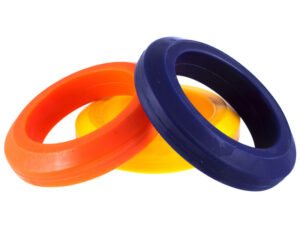
Other Polyurethane Molding Processing Methods
While polyurethane injection molding is a widely used technique, there are other methods of processing polyurethane materials depending on the desired product characteristics.
Compression Molding
Compression molding is used for producing larger polyurethane parts. In this method, a preheated material is placed into an open mold cavity, which is then closed and compressed to form the final shape. It is commonly used in producing urethane molding products.
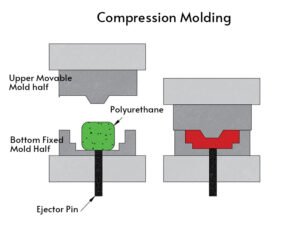
Reaction Injection Molding (RIM)
RIM involves mixing two liquid components of polyurethane in the mold cavity, where they react and solidify. This process is typically used for producing larger, less complex parts such as automotive bumpers and body panels.
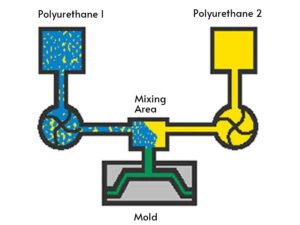
Comparison with Polyurethane Casting Molding
Polyurethane casting molding and injection molding are both effective methods for manufacturing parts, but they have distinct differences.
Polyurethane Casting Molding: This method involves pouring liquid polyurethane into a mold, where it cures over time. It is ideal for low-volume production and prototype parts. However, it tends to be slower and less precise compared to injection molding. Learn more about: urethane casting molding.
Polyurethane Injection Molding: In contrast, PU injection molding is faster, more precise, and ideal for high-volume production. It can produce parts with finer details and tighter tolerances, making it suitable for more demanding applications.
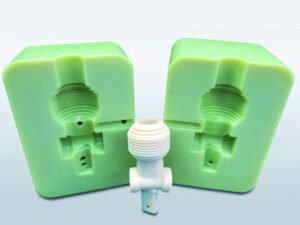
Conclusion
Polyurethane injection molding is a highly effective process that allows manufacturers to produce a wide range of durable and versatile parts. Whether used for creating flexible or rigid components, the process offers significant advantages, including high precision, cost-effectiveness, and versatility. From automotive to medical applications, the ability to mold polyurethane plastic molding into various shapes and densities makes it an invaluable material in modern manufacturing.
With its numerous applications and processing methods like urethane injection molding and polyurethane molding, it is clear that polyurethane remains one of the most adaptable materials in the industry today. By understanding the nuances of the process, such as mold design considerations and temperature control, manufacturers can ensure the production of high-quality products suited to their specific needs.




